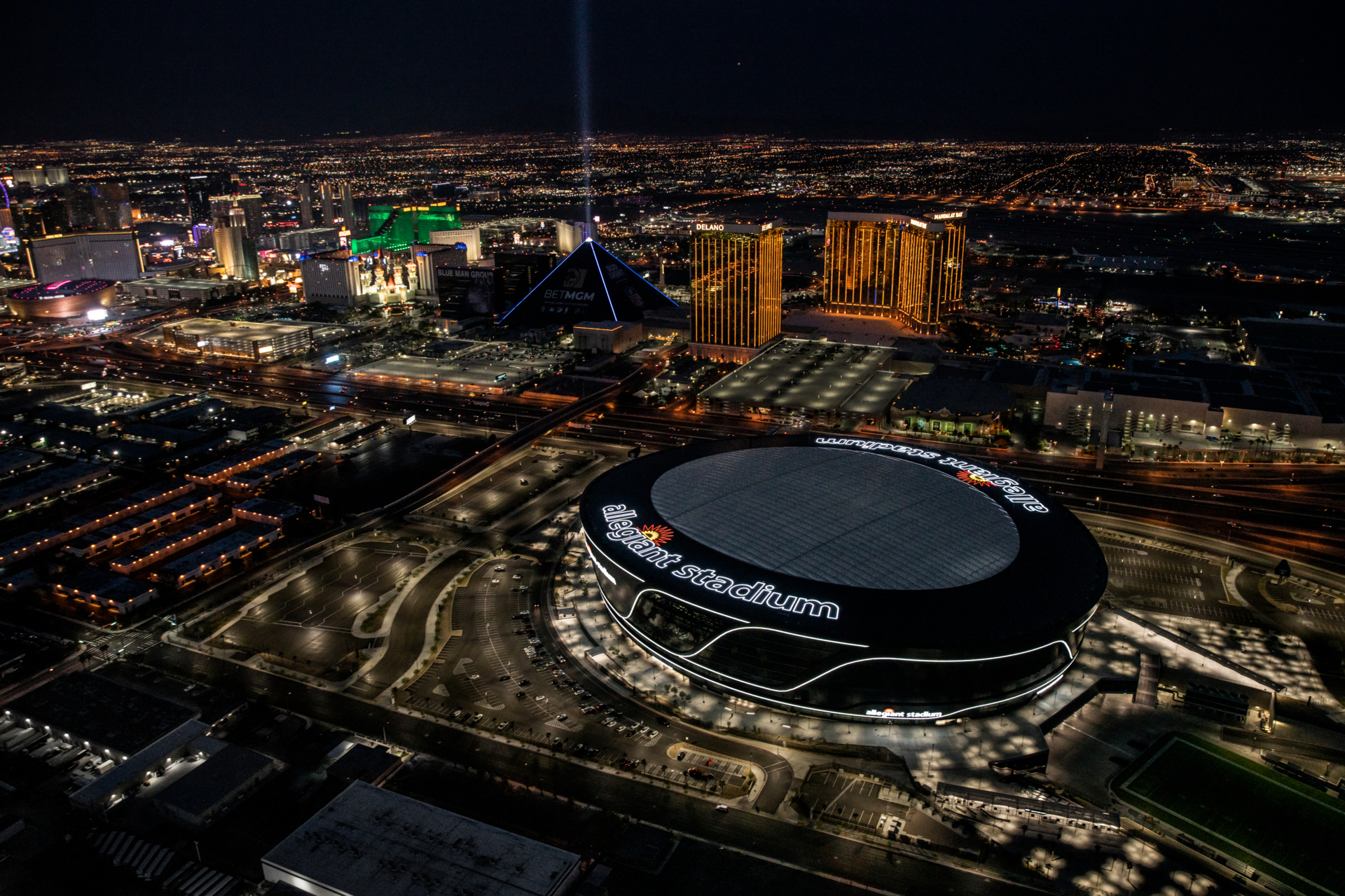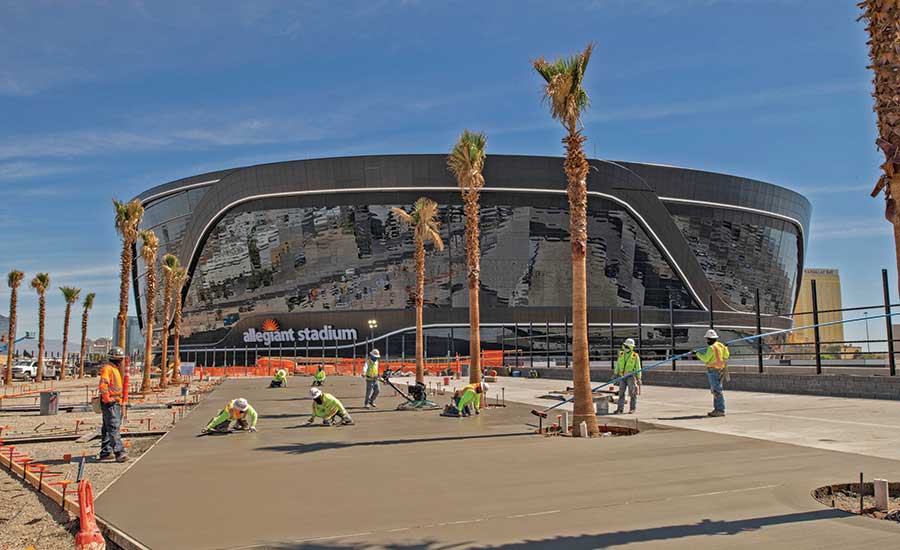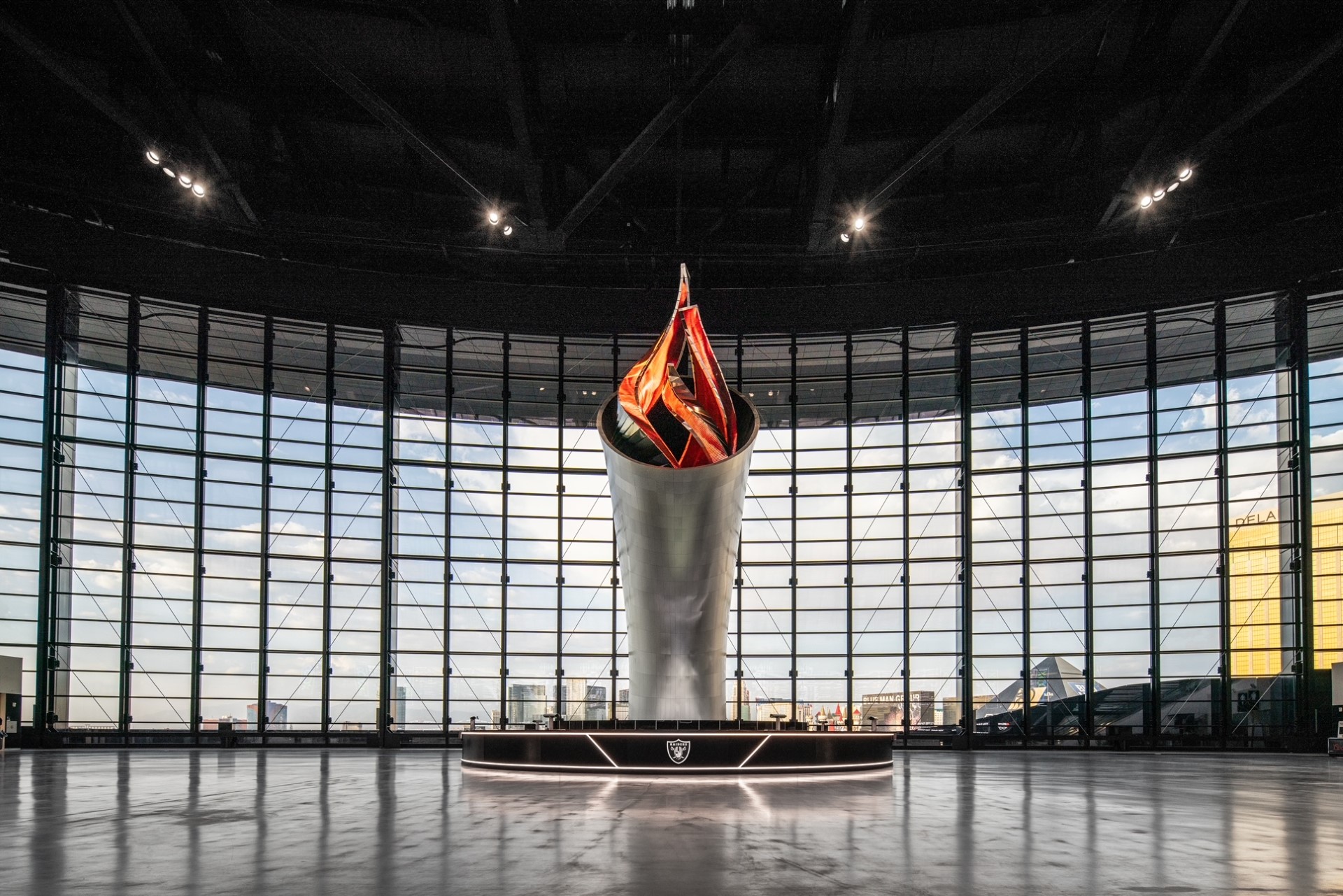
Nicknamed the “Death Star” by owner Mark Davis, the stadium was built with a healthy amount of American-made steel and other Made in USA materials.
Al Davis, the late, longtime owner of the National Football League (NFL) Raiders franchise, spent his entire career looking for someone who would build his team a new, modern stadium. In 1982, he went as far as moving the team from Oakland, Calif., where it began in 1960, to Los Angeles in search of luxury suites and modern amenities.
That chess-move to L.A. turned out to be an unsuccessful end run, and in 1995 Davis moved his beloved Raiders back to the untenable situation in Oakland.
Al Davis died in 2011, having never realized his dream of a new home for the Raiders who had amassed three Super Bowl wins under his tutelage as an NFL owner.
Davis’ widow Carol and son Mark have the controlling interest in the team today with Mark running the day-to-day operations as managing general partner and operating head of the franchise.
Mark Davis will certainly never be able to duplicate his father’s many accomplishments, but he has succeeded at the one thing his father could not do – get the Raiders a brand-new stadium.
In 2017, Mark Davis finalized a deal with the NFL and the city of Las Vegas to move the team to the gambling mecca with an agreement to build a state-of-the-art stadium on 62 acres adjacent to the sprawling Mandalay Bay hotel and Interstate 15.
Construction began on what would become Allegiant Stadium in September 2017, and was completed on July 31, 2020, in time for the newly named Las Vegas Raiders first season in the desert.
And it’s where Super Bowl LVIII will be played on Sunday, with the San Francisco 49ers facing off against the Kansas City Chiefs. The $1.97 billion Allegiant Stadium is the second most expensive stadium in the world – and it is also mostly an American-made venue.

Nearly all of the structural steel in Allegiant Stadium was melted and poured by Nucor Corp. at the Nucor-Yamato steel mill in Blytheville, Ark.
The steel fabrication was done by Merrill Steel, with at least 10,000 tons produced at its Springfield, Mo. factory. Merrill Steel fabricated a total of 28,500 tons for the stadium build, with additional work done at its other facilities in Schofield, Wis. and Camanche, Iowa. Merrill also subcontracted some of its fabrication work to smaller companies across the United States.
Construction on the stadium was a joint venture between Mortenson Construction and McCarthy Building Companies. Mortenson previously worked on the mostly American-made U.S Bank Stadium in Minneapolis.
“Around 28,000 tons of steel overall was procured from Merrill,” said Paul Dudzinski, vice president of operations at McCarthy in Las Vegas. “And they probably subbed out the fabrication to at least 30 different shops across the nation from Louisiana to Washington State just based on varying portions of the project and the speed it needed to be done.
“That was the whole logistic challenge coordinating between 30-plus shops, special inspections, quality control and things like that. But it did get here on time. It came in from all directions across the U.S. by truck.”
Allegiant Stadium has a seating capacity of 65,000, but is expandable to 72,000 for major events like Sunday’s Super Bowl. And the 140 luxury suites surely would have put a smile on Al Davis’ face.
“Just recently they added 12 boxes on the 100 level,” Dudzinski said. “For Vegas, that premium product is very popular here.
“The casinos all have one or two boxes which makes sense for their special guests. MGM has a mega box at the end of one of the suite levels.”
Allegiant Stadium is a ten-level, fixed-domed stadium featuring a silver and black exterior with light-up strips installed by Salt Lake City, Utah-based YESCO, a 275-foot media mesh video screen facing Interstate 15 and curtain-like side windows facing the Las Vegas Strip.
The roof is made of ethylene tetrafluoroethylene (ETFE) which are fluorine-based plastic-like inflatable pillows. It is designed to have high corrosion resistance and strength over a wide temperature range.
Another of the stadium’s American-made steel components is the tray that holds the Bermuda grass field. It is like the roll-in, live grass tray at the Arizona Cardinals home stadium in Glendale, Ariz.
Designed, manufactured, and installed by Minneapolis-based Uni-Systems, it comprises a 4 -foot-deep, 9,500-ton tray that houses the grass field along with irrigation and drainage systems. When not in use, the grass field is mechanically rolled outside for sun exposure and watering. It is rolled back into the stadium on NFL game days.
“There’s a 19-million-pound retractable field that’s out there that was built out of structural steel,” Dudzinski said. “I mean, it’s a steel structure itself, with metal decking and a concrete slab, waterproofing and soil and drain engineered irrigation on top of that.”
The stadium also has an artificial turf surface that is used for University of Nevada-Las Vegas (UNLV) football games. The artificial turf field is placed on the stadium’s concrete floor and gets rolled up and is stored under the stadium when NFL games are played.
The Mortenson/McCarthy joint venture, despite delays because of the Covid-19 pandemic, was able to complete the stadium one day before its deadline. The stadium also came in at $25 million under budget.
The Small Business Enterprise (SBE) goal at Allegiant Stadium was 15%. The project achieved 23% SBE participation in total and $297 million was awarded to 169 different firms.
“We had roughly 10,000 folks that went through the safety orientation on the project,” Dudzinski said. “At our peak, manpower on site on any given day was just over 2,400 craft folks.
“Building this stadium had a huge financial impact on the city. Hundreds of millions of dollars were spent with local subcontractors and in the local community. The Super Bowl is slated to have a $100-plus-million-dollar financial impact to Vegas.”
Allegiant Stadium is an imposing site, especially when it is lit at night. It is a circular shape that stands 226 feet from the ground to the roof and is painted black.
Las Vegas Raiders owner Mark Davis called the new building the “Death Star” when it was completed, and the name stuck. The stadium with its black façade resembles the ominous space station from the Star Wars franchise that could destroy planets.
“Welcome to the Death Star, where our opponents’ dreams come to die,” said Davis at the time.
The exterior of Allegiant Stadium, in a subtle way, seems to fit in with bright lights of the Las Vegas Strip. The white light striping helps accentuate the outer space look of the black building.
“There’s a bunch of video boards and kind of a mega video board on the exterior façade that they use either for advertising or all kinds of other stuff,” Dudzinski said.

At the North end of the stadium is the 92-foot high Al Davis Memorial Torch. This monument to the Raiders founder is the largest 3D printed object in the world. It is made up of 225 3D-printed blocks made of carbon fiber each weighing approximately 350 pounds.
Dimensional Innovations (DI) of Overland, Kansas designed the torch, with a team of 18 employees who invested more than 50,000 hours over two years creating and installing the memorial torch.
DI had to purchase a large-scale additive manufacturing machine from Indiana-based Thermwood Corporation. The polycarbonate blocks were supplied by Techmer PM, Tennessee.
The torch is electronic and is lit by a former Raiders player or celebrity before every home game. It is a tradition that dates to 2011, when former Raiders coach John Madden lit an actual torch when the team was based in Oakland.
There are huge lanai doors on the north end of the stadium facing Interstate 15 and the Strip. The doors are 80 x 215 feet and take 10 minutes to open but the result is a clear view of the nearby casinos and hotels.
Las Vegas has always been crowded with revelers and gamblers during Super Bowl week. They watch the game on TV while making wagers on numerous propositions.
But this year offers a first-time ever proposition. Hit it big at the craps table or the blackjack games and you just might be able to walk to the Super Bowl stadium and dish out $7,000 for a ticket.
The Super Bowl kicks off at 6:30 p.m. ET on Sunday. You can watch the game on CBS or catch the live stream on Paramount+.
